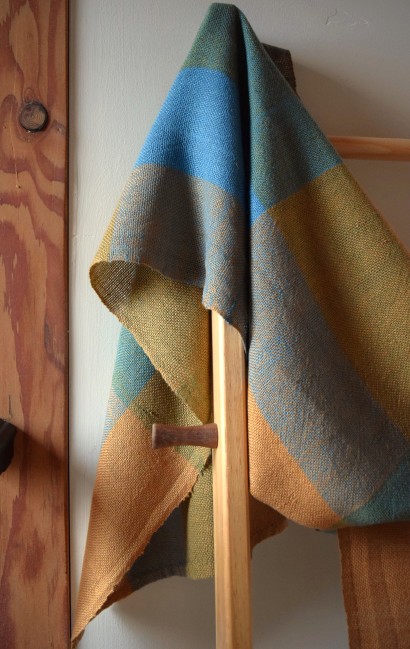
Another simple check with three big blocks of color shows so well how shades interact and colors multiply, intersections creating new colors and keeps the interest going through the arduous task of managing even edges. Something so basic as three colors can give a lot of gratification when first learning the basics of weaving. I am still a massive fan of check!
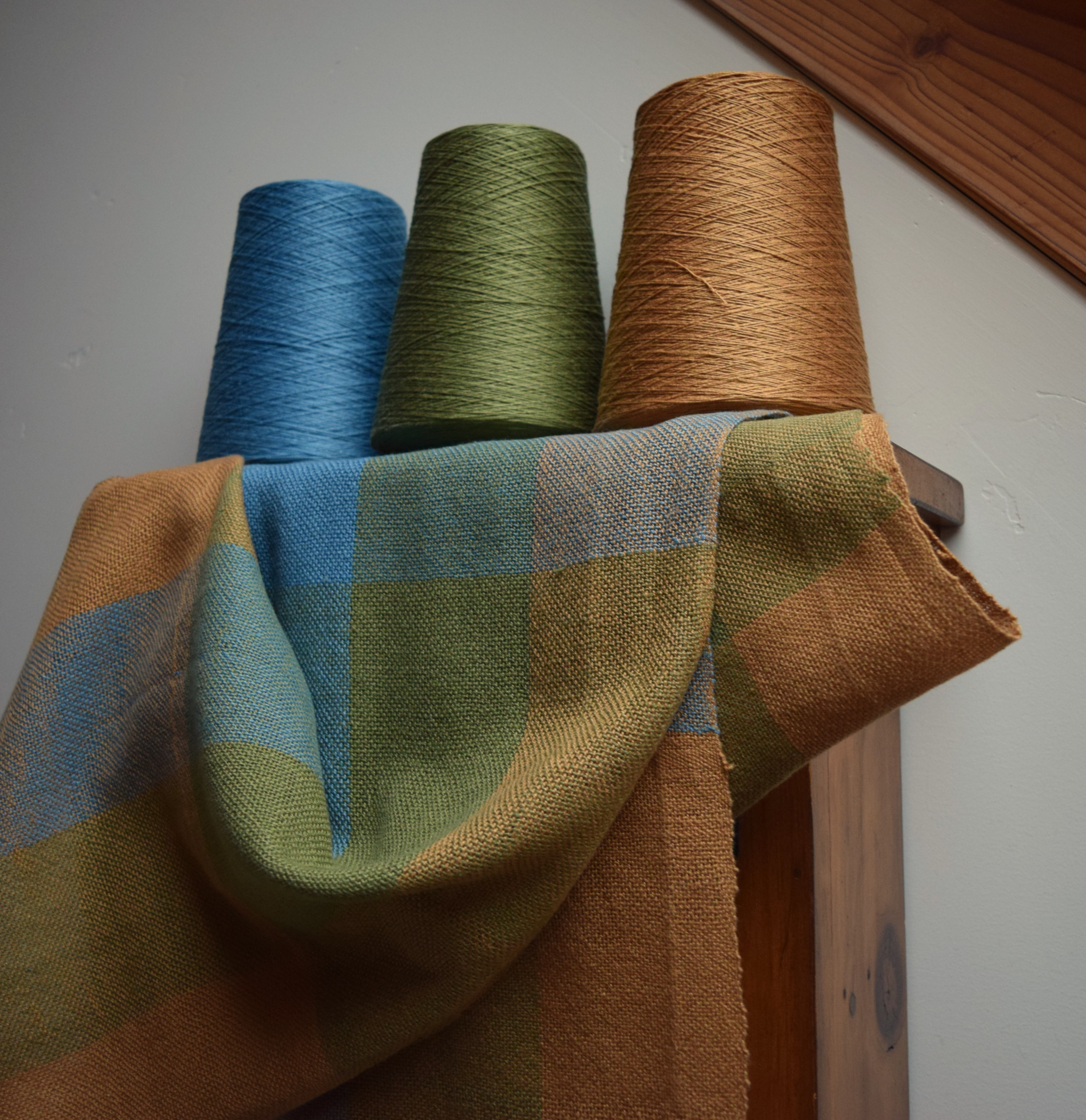
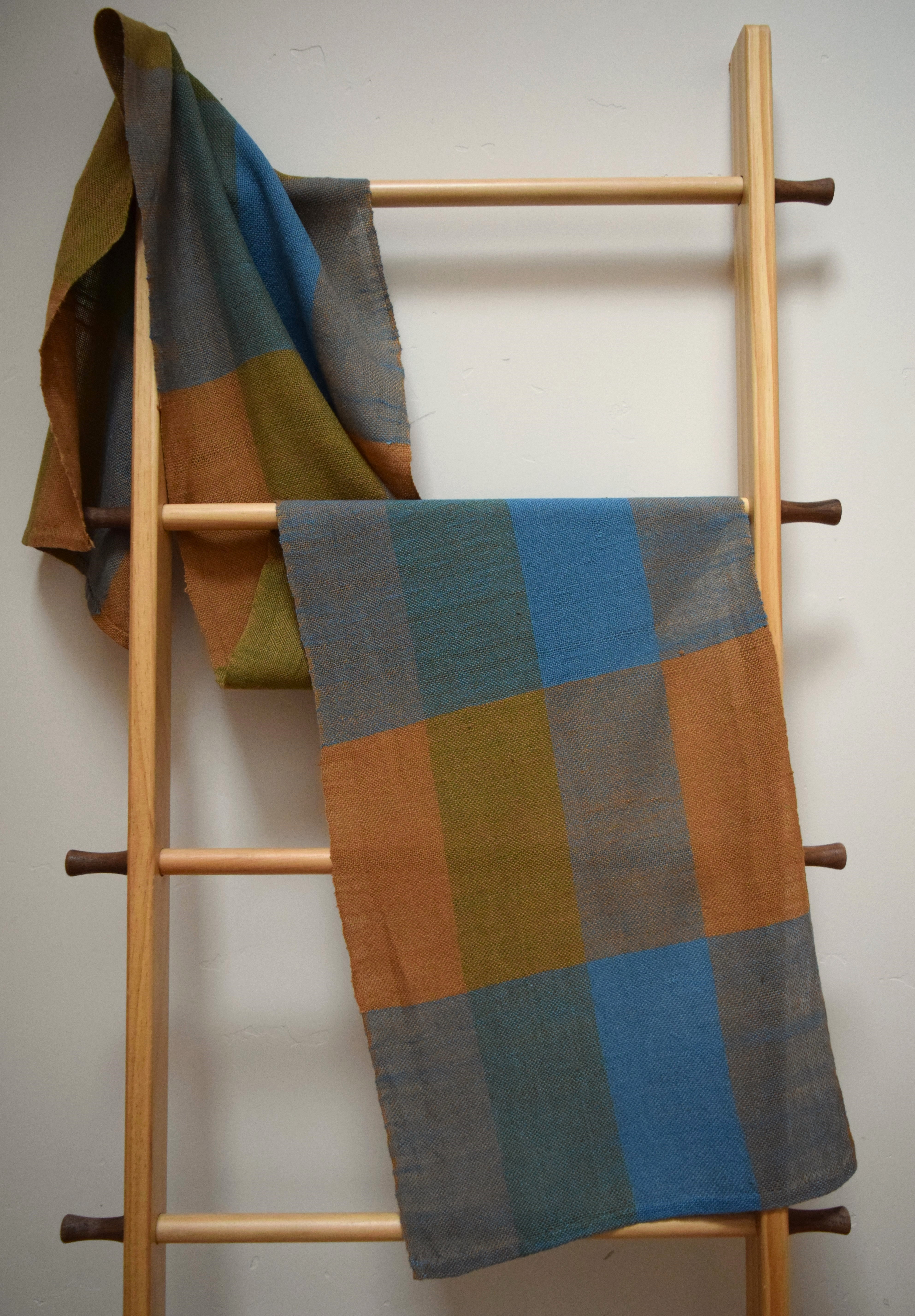
In my recent weavings I’ve been reinforcing the selvedges with extra threads and using a temple, which at this early stage of becoming a weaver, I have already come to rely upon. I think every once in a while weaving something without extra selvedge threads or temple, would give me practice keeping the selvedges from drawing inward by keeping the tension even but not too tight, and the weavers’ angle generous. There are many weaving notes and photos left below, in the event that anybody might find them useful, and I am happy to talk about the details further in the comments as well.
♣ Weaving Notes ♣
- Yarn: 10/2 cotton, 4200yds / 1 lb, Valley Yarns Mercerized in colors; Golden Ochre (7129), Moss Tone (5997), and Mediterranean Blue (2448). This is the first time I used mercerized cotton, having no idea how much I would like it, I really do!
- Loom: Ashford Knitters Loom 20″.
- Warping method: Direct warp set-up, 1 end in every heddle/hole, and 1 in every dent/slot –drawing out from apron rod through each dent to peg is 2 ends = each color 30 dents = 60 ends. Approx 100 inches from apron rod to warping peg.
- Number of warp ends: 240
- Reed: 15 dent rigid heddle 20″ reed, and width in reed = 15.5″.
- Sett on loom: Warp = 15 epi (threads or “ends” per inch), weft = 15 ppi (passes or “picks” per inch).
- Sett after finishing: Warp 16 epi, and weft 16 ppi.
- Color Pattern: Warp = 60 ends gold, 60 ends green, 60 ends blue, 60 ends gold. Weft = wound
60 full wraps on to the stick shuttle for each color, in repeating sequence gold, green, and blue. - Finished: 1/4 inch turned hem, then washed and dried in machine, then pressed, measuring 68″ long and 14″ wide, and weighs 117g.
- Yardage: Total yardage used = 1083 y, figured from weight of finished piece and not including loom waste.

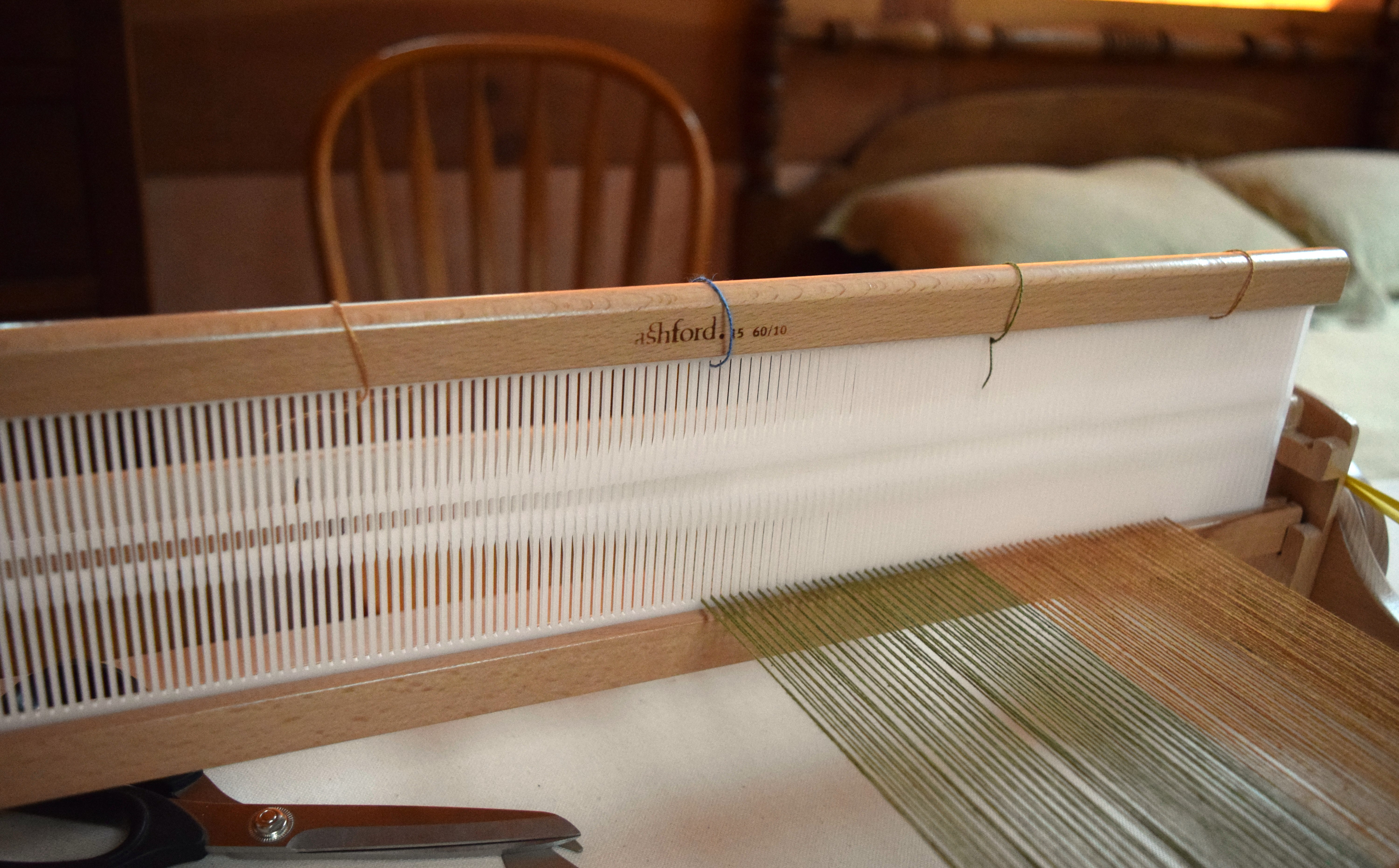
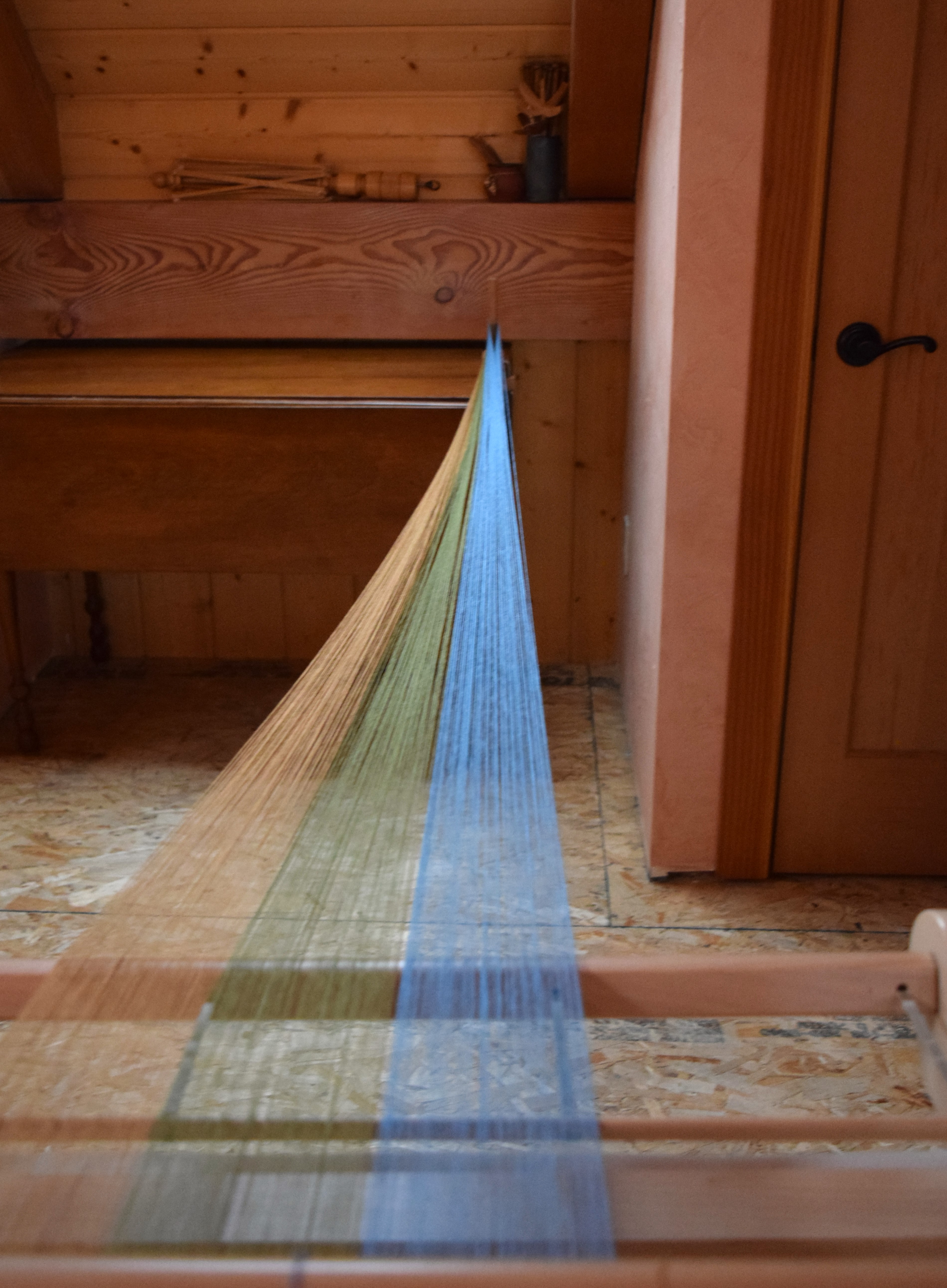
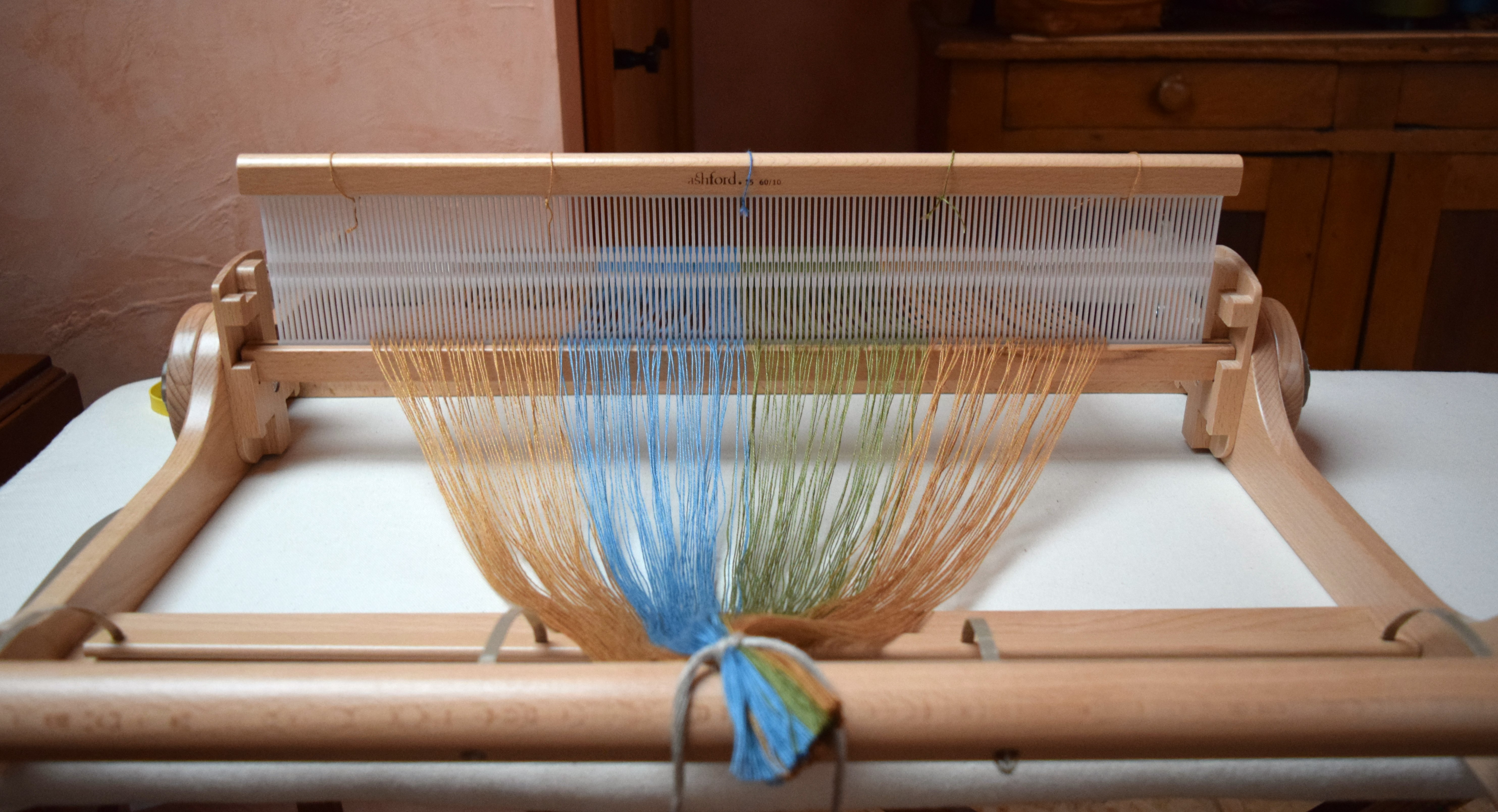

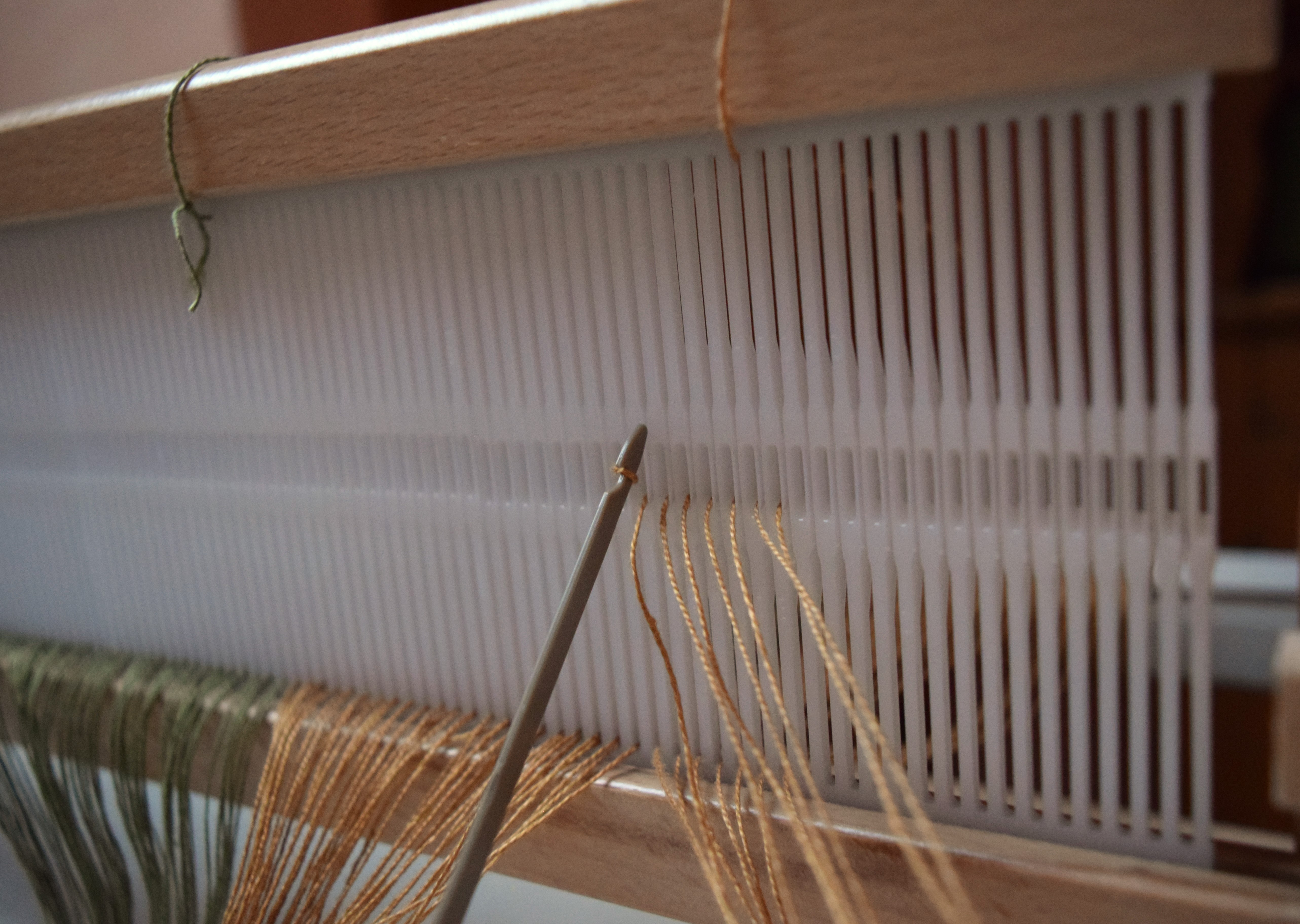
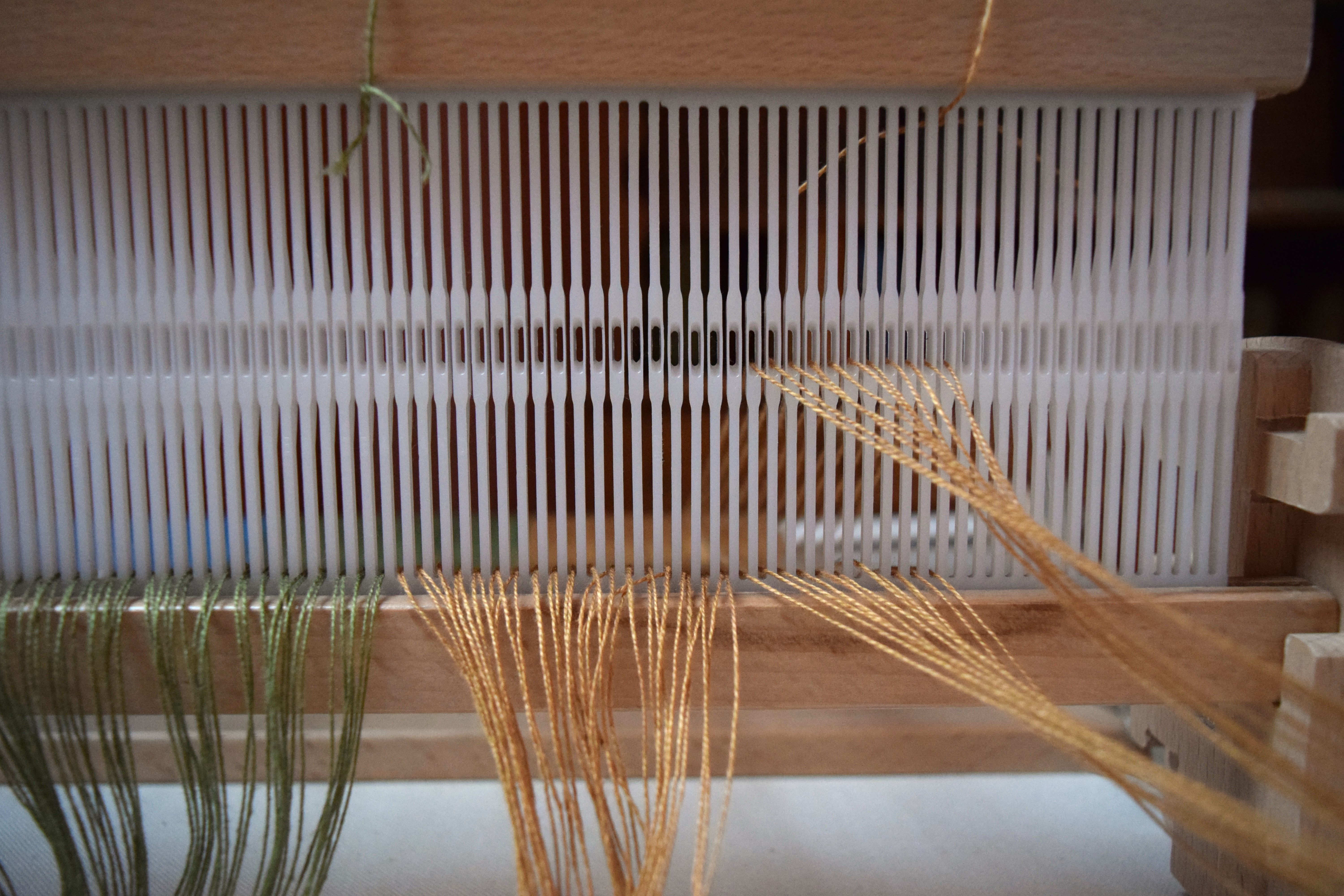

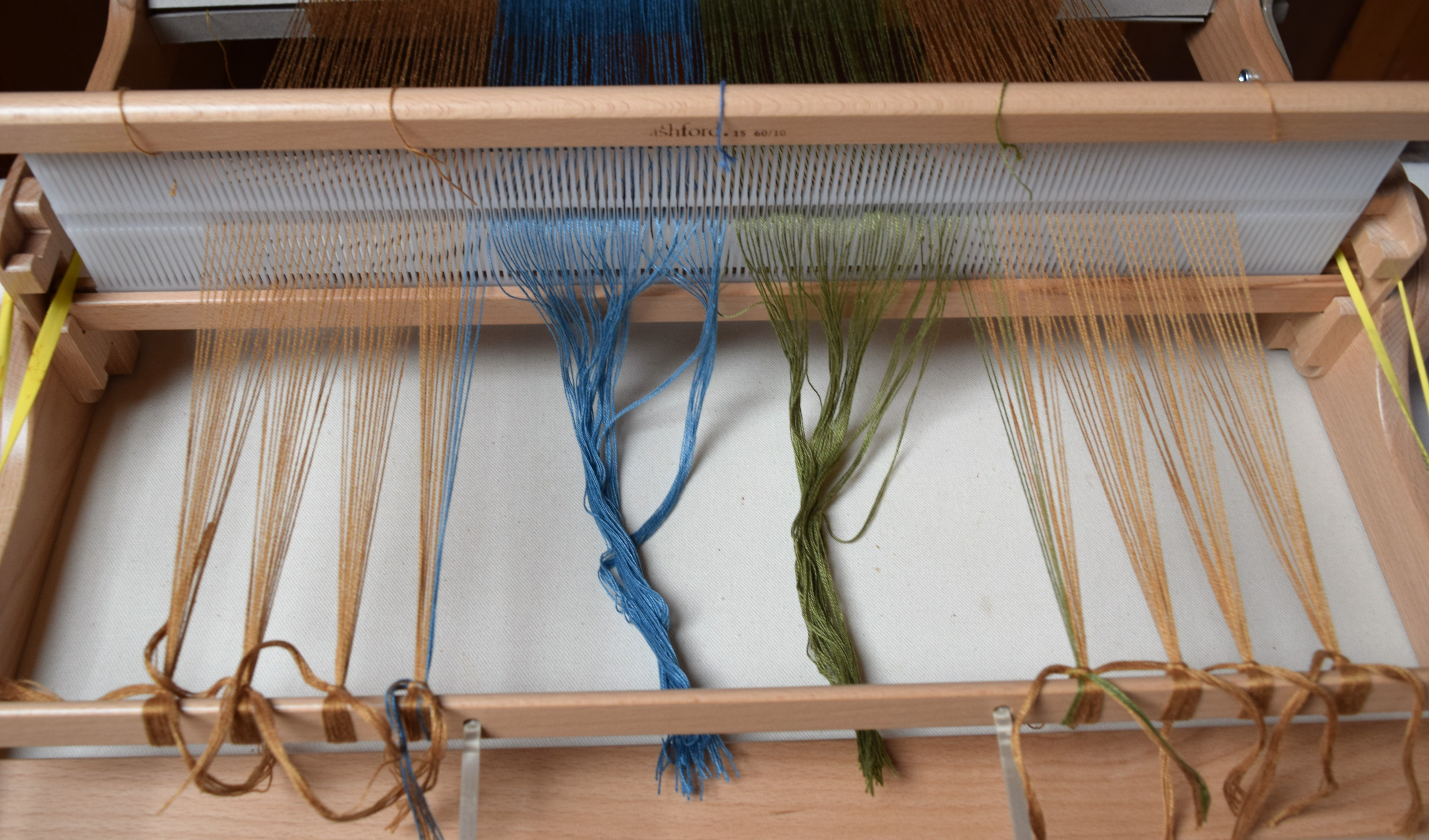

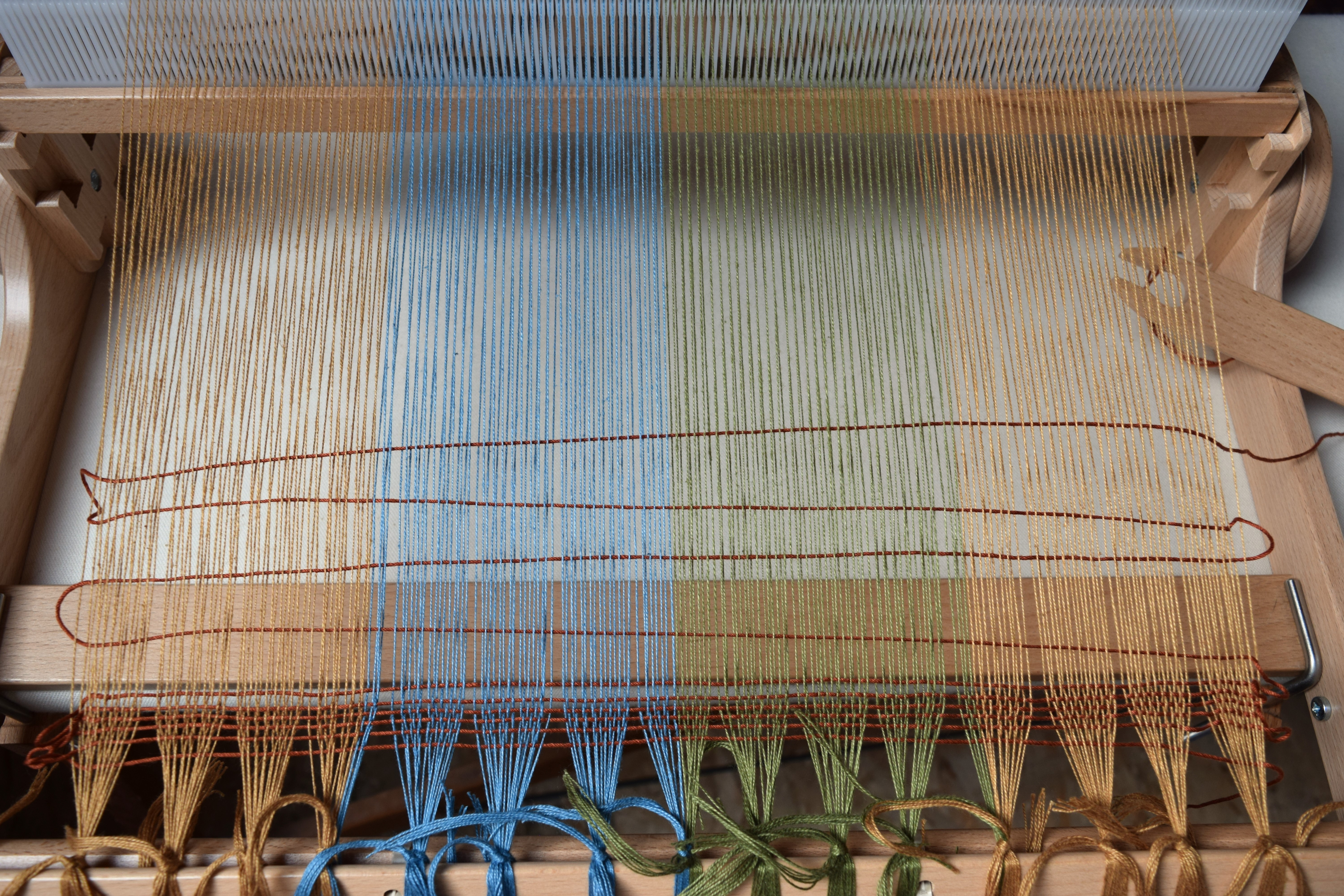






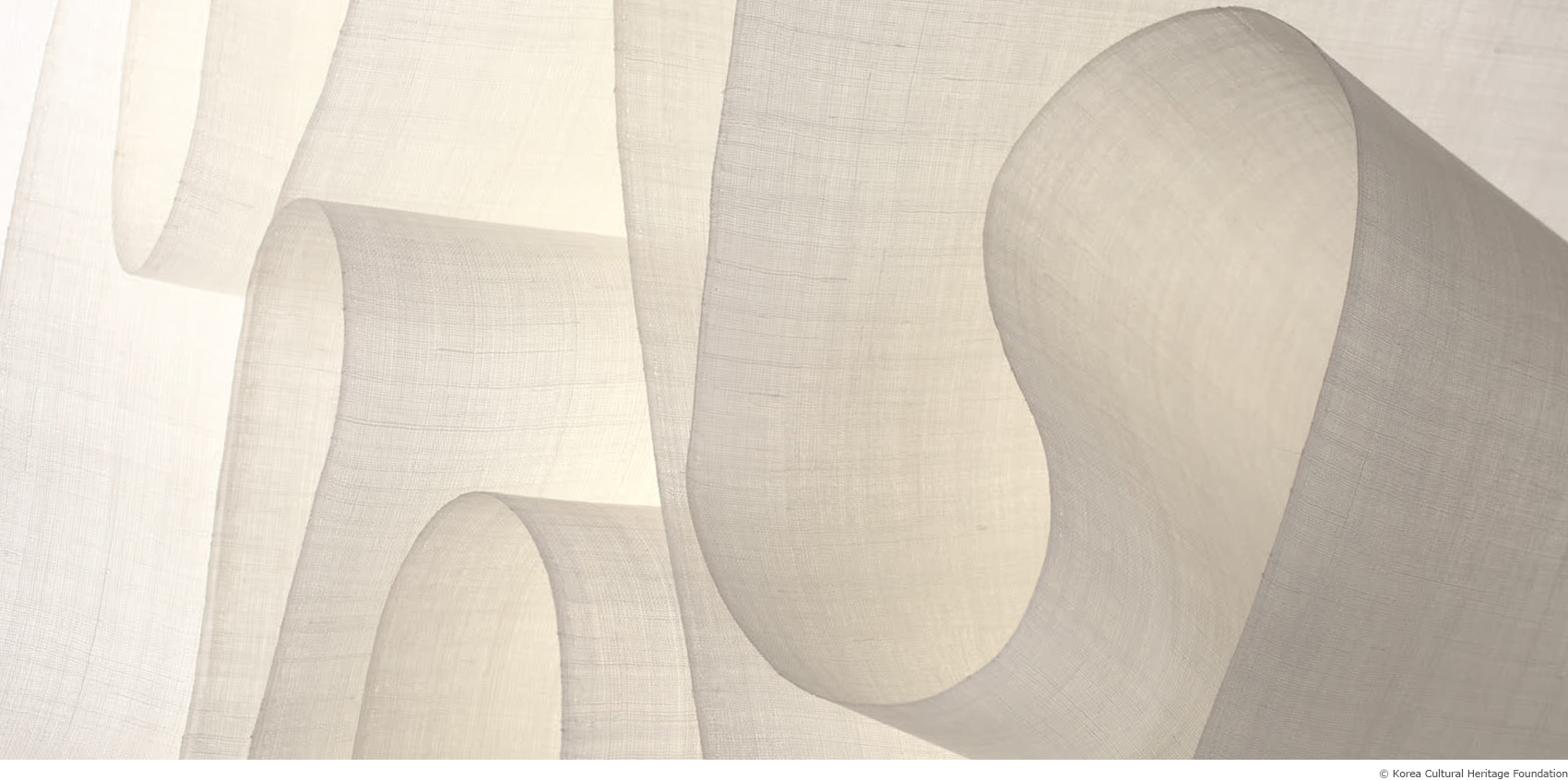





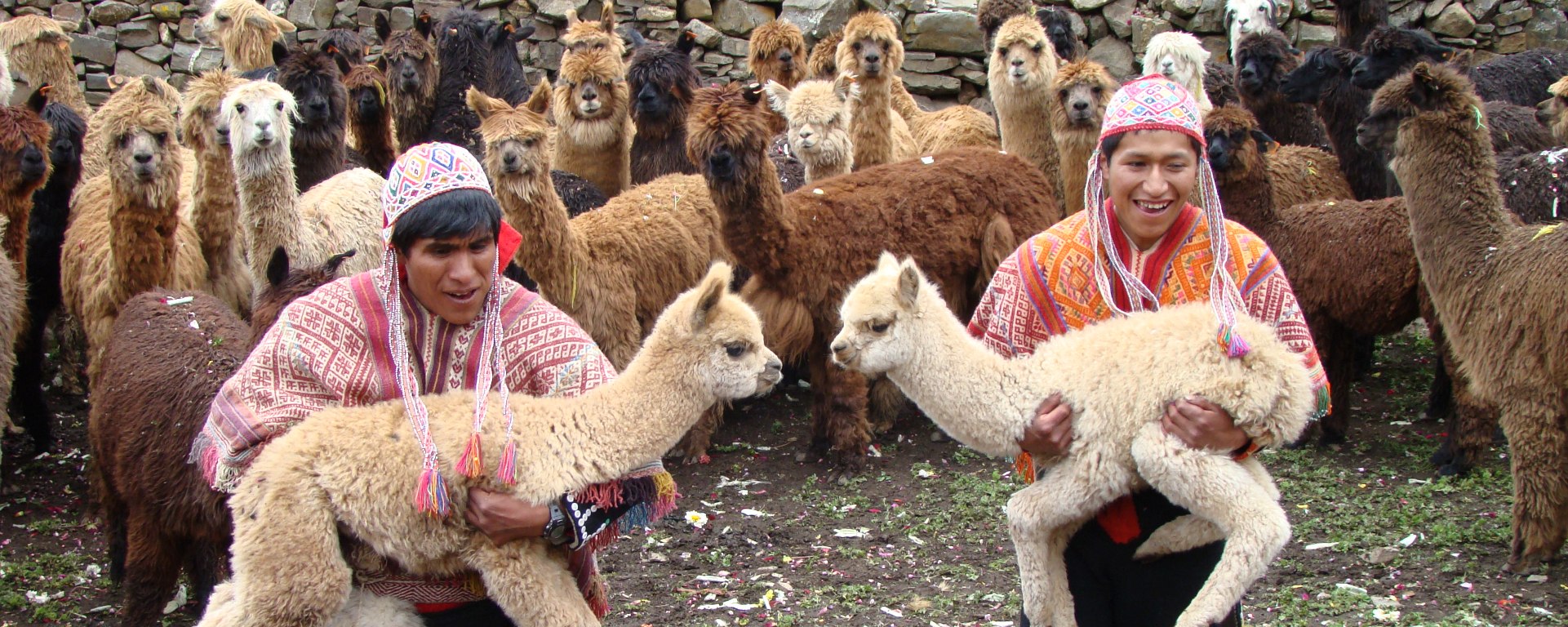









You must be logged in to post a comment.